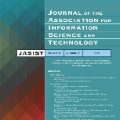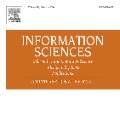In bibliometrics, the association of "impact" with central-tendency statistics is mistaken. Impacts add up, and citation curves should therefore be integrated instead of averaged. For example, the journals MIS Quarterly and JASIST differ by a factor of two in terms of their respective impact factors (IF), but the journal with the lower IF has the higher impact. Using percentile ranks (e.g., top-1%, top-10%, etc.), an integrated impact indicator (I3) can be based on integration of the citation curves, but after normalization of the citation curves to the same scale. The results across document sets can be compared as percentages of the total impact of a reference set. Total number of citations, however, should not be used instead because the shape of the citation curves is then not appreciated. I3 can be applied to any document set and any citation window. The results of the integration (summation) are fully decomposable in terms of journals or instititutional units such as nations, universities, etc., because percentile ranks are determined at the paper level. In this study, we first compare I3 with IFs for the journals in two ISI Subject Categories ("Information Science & Library Science" and "Multidisciplinary Sciences"). The LIS set is additionally decomposed in terms of nations. Policy implications of this possible paradigm shift in citation impact analysis are specified.
翻译:在字形测量中, “ 影响” 与中端统计的关联是错误的。 影响加起来, 引用曲线应该合并, 而不是平均。 例如, 杂志MIS 季刊和 JASIST 在各自影响因子( IF) 上, 日记与下级综合框架 的影响更大。 使用百分数等级( 例如, 最高- 1%, 最高- 10%等), 综合影响指标( I3) 可以基于引用曲线的整合, 但是在引用曲线正常化到同一规模之后。 跨文件集的结果可以与一个参考集总影响的百分比相比较。 但是, 引用的总数不应该使用, 因为引用曲线的形状因此不被人理解。 任何文件集和任何引用窗口都可以应用 I3 。 整合的结果( 总结) 可以完全基于杂志或国家、 大学等情况单位的兼容性, 而在引用曲线的曲线正常化之后。 跨文档集的结果可以与一个参考集的总体影响的百分比百分比等级比起来。 然而, 引用的总数不应该使用, 因为引用的总数, 是因为引用曲线的形状是I 和IIS 的I 的I 类中, 我们的I 和I 的I 的I 科学 的比较了I 。





